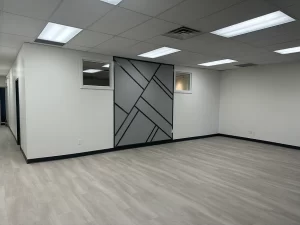
Building a durable interlocking patio is essential for creating an outdoor space that withstands the test of time while providing years of enjoyment. From proper site preparation to choosing the right materials and installation techniques, there are several key factors to consider ensuring the longevity and durability of your interlocking Markham patio.
Proper site preparation:
Start by properly preparing the site for your interlocking patio to ensure a stable and long-lasting foundation. Clear the area of vegetation, debris, and any existing structures or obstacles. Excavate the soil to the desired depth, taking into account factors such as drainage, slope, and soil stability. Compact the soil thoroughly to create a solid base for your patio pavers and prevent settling or shifting over time.
Quality materials:
Invest in high-quality materials for your interlocking patio to ensure durability and longevity. Choose interlocking pavers made from durable materials such as concrete or natural stone, which are resistant to cracking, fading, and weather damage. Opt for pavers with a textured surface for improved traction and slip resistance, especially in areas prone to moisture or wet conditions.
Proper installation techniques:
Proper installation techniques are crucial for the durability and stability of your interlocking patio. Follow manufacturer guidelines and best practices for laying and securing the pavers, including proper base preparation, joint sand installation, and edge restraint installation. Use a quality bedding material such as crushed stone or sand to provide a stable base and promote proper drainage. Ensure that the pavers are installed with tight joints and uniform spacing to prevent shifting and settling over time.
Adequate drainage:
Proper drainage is essential for preventing water damage and prolonging the life of your interlocking patio. Ensure that the patio slopes away from your home or other structures to promote runoff and prevent water pooling. Install a permeable base and joint sand to allow water to infiltrate into the ground rather than collecting on the surface. Consider incorporating drainage solutions such as French drains or channel drains to redirect water away from the patio and prevent erosion.
Regular maintenance:
Regular maintenance is key to preserving the durability and appearance of your interlocking patio over time. Sweep or rinse the surface regularly to remove debris, dirt, and stains that can accumulate between the pavers. Replace joint sand as needed to maintain stability and prevent weed growth. Inspect the patio periodically for signs of damage or settling, and address any issues quickly to prevent further deterioration.


